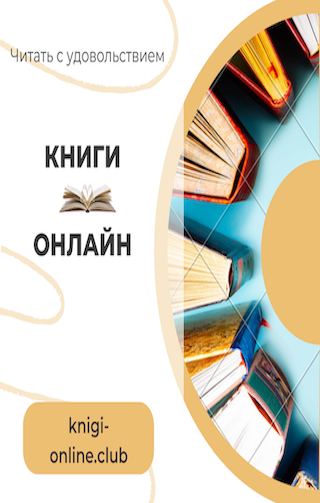holding company as a device for combining competing con- cerns was virtually outlawed (where interstate commerce was involved), even when monopoly was not the aim” (Bonbright and Means 1932, pp. 75–76).
340. Link (1954, p. 70); Urofsky (2009, p. 119).
Notes to Chapter 4 579
341. In the January 20 address, Wilson expressed sympathy with “the individuals who are put out of business in one unfair way or another by the many dislodging and exterminating forces of combination.”
342. McCraw (1984, pp. 120–21); Urofsky (2009, pp. 289–92).
343. Link (1954, pp. 71–72); McCraw (1984, pp. 122–25); Urofsky (2009, pp. 389–95). The author of the FTC bill was actually Brandeis’s associate George Rublee, who was a fervent sup- porter of the Bull Moose Party and a proponent of the strong commission Roosevelt favored.
344. Young (1915, p. 326).
Chapter 4: The Seminal Catastrophe
1. Kennan (1979, p. 3, emphasis original).
2. Eisner (2000); Leuchtenburg (1964, p. 84).
3. Angell (1912).
4. The definitive recent account of the events leading to the war is Clark (2013). See also
Meyer (2006). “Strikingly,” writes Mark Harrison (2016, p. 138), “the decision makers in every country were subscribers to a virtual world where the zero-sum game of power was being played out, not the positive-sum game of commerce and development.”
5. Scheidel (2017, p. 142).
6. Eichengreen (1996, pp. 68–70); Meltzer (2003, p. 82).
7. Eichengreen (1996, p. 70).
8. Friedman and Schwartz (1963, p. 198).
9. Eloranta and Harrison (2010, p. 145); Friedman and Schwartz (1963, p. 200).
10. Eisner (2000, p. 52).
11. Burk (1989, p. 127).
12. Glaser (2006, p. 231).
13. Chernow (1990, p. 191).
14. Forbes (1974). Originally the Export Department was a separate operation working on
contract with Morgan. But very quickly Stettinius was made a senior partner and the operation was formally moved in-house, probably because of the large commissions Stettinius was receiving.
15. Glaser (2000, p. 390).
16. Glaser (2006, p. 232).
17. Forbes (1974, p. 62).
18. Chernow (1990, p. 190).
19. Chernow (1990, p. 202); Glaser (2006, p. 233). 20. Koistinen (1997, p. 266).
21. Chandler and Salsbury (1971, pp. 360–63); Hatch (1956, pp. 213–25); Williamson (1952, chapter 19). Connecticut’s third iconic gun-maker, the Colt Patent Firearms Company of Hartford, was also immediately engaged in work for the Allies, notably making Vickers machine guns.
22. Williamson (1952, p. 228). This despite the fact that the British Enfield Armoury had been set up to emulate the so-called American System of manufacturing (Hounshell 1984, p. 4).
23. Koistinen (1997, p. 130). The transfer did not become official until the US entered the war.
580 Notes to Chapter 4
24. Hatch (1956, pp. 220 and 222). The Czar sent some 1,500 inspectors to Bridgeport to oversee the Remington order, including one kitted out as a Cossack captain in full regalia.
25. Crowell (1919, p. 181). The American Enfields were rechambered to accept 0.30-caliber Springfield shells and thus complemented the existing stock of Springfields available to Ameri- can troops (Grotelueschen 2006, p. 28).
26. Chandler and Salsbury (1971, pp. 363 ff.). 27. Crowell (1921, p. xxi).
28. Koistinen (1997, p. 121).
29. Nasaw (2006, p. 585).
30. McCraw and Reinhardt (1989).
31. Schwab’s departure from U.S. Steel and his acquisition of Bethlehem is a tangled story, on which see Hessen (1975).
32. Warren (2008, pp. 77–78). In hard-driving Bethlehem, Schwab insisted on retaining earn- ings to plow into new investment and refused to issue dividends. This angered the company’s second-largest stockholder—none other than Samuel Untermyer, soon to be of Pujo fame. When Untermyer threatened to sue, he was placated with a seat on the board (Hessen 1975, p. 226).
33. Urofsky (1969, p. 89). “In 1904 Bethlehem’s armor sales had produced nearly half of the company’s income. By the time of the outbreak of World War I, the armor plant represented only five percent of the company’s total investment, and armor sales accounted for only three percent of its annual income” (Hessen 1975, p. 226).
34. On Schwab’s ambition to emulate Krupp, see Warren (2008, p. 102). Bethlehem Steel Cor- poration was the parent of the shipyards (and other holdings) and of the Bethlehem Steel Com- pany, which in turn had a variety of subsidiaries. In 1917, the Corporation’s shipyards were merged into the Bethlehem Shipbuilding Corporation, a 100 percent subsidiary. Bethlehem Mines Cor- poration and Ore Steamship Corporation followed soon thereafter (Swaine 1946, p. 198).
35. Hessen (1975, pp. 211–12). The White Star liner Olympic, on which Schwab and a col- league were sailing, was diverted north of Ireland because of submarine activity. There the liner came to the aid of the dreadnought H. M. S. Audacious, which had struck a mine. After rescuing the crew, the Olympic (sister ship of the Titanic) attempted unsuccessfully to tow the battleship, but was forced to seek refuge in Lough Swilly when a German submarine appeared. The subma- rine finished off the Audacious. Not wanting the news of the sinking to get out immediately, the British sequestered the passengers in Ireland, and Schwab (but not his colleague) was allowed to proceed to London only after the commanding admiral had been informed of his mission. Whether Americans should be permitted to travel on British-flag ships, some of them carrying armaments, would become a central issue of the American neutrality.
36. Urofsky (1969, p. 90n16). Bethlehem continued to fulfill direct contracts as late as 1918. 37. Urofsky (1969, p. 93).
38. Hessen (1975, p. 231); Urofsky (1969, p. 85).
39. Hessen (1975, p. 231); Urofsky (1969, pp. 93–95); Warren (2008, p. 107). Frederick Win-
slow Taylor had cut his teeth at Midvale in the late nineteenth century. Midvale was also a profit opportunity in 1915 because the previous owner had refused to sell to the Allies: one of his daughters had married a Briton, the other a German, and he was strictly neutral.




